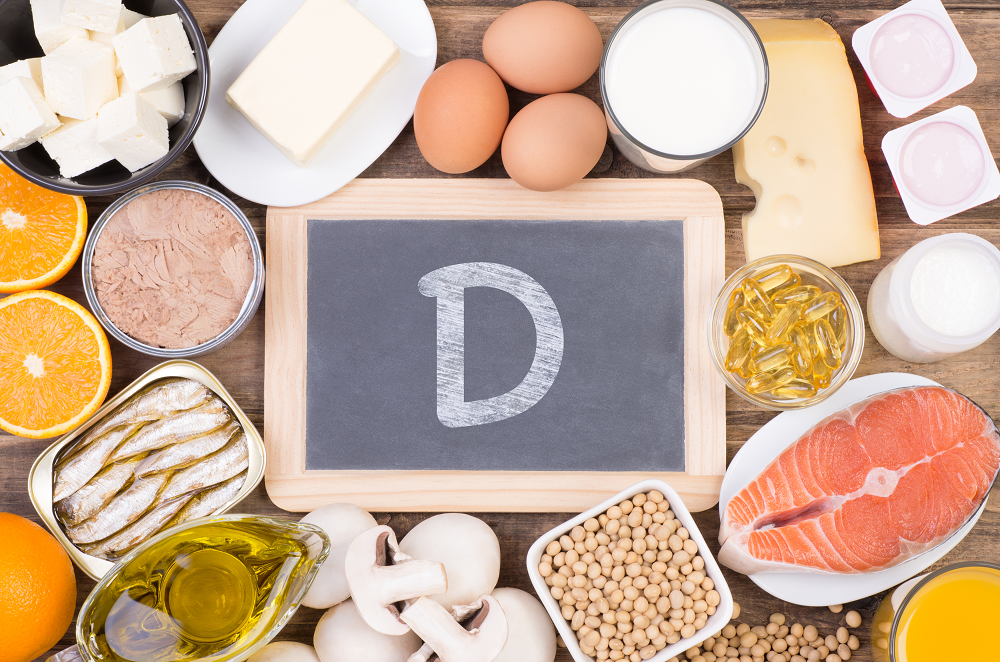
Recent research only published this year reveals that individuals with higher levels of body fat (and larger waistlines) are more likely to have lower vitamin D levels. So, what exactly is the link between this vitamin and our health and weight?
The recent re-emergence of rickets (a severe form of vitamin D deficiency causing deformity of the bones) amongst infants in Ireland indicated the widespread low levels of vitamin D in the Irish population. It has also been reported that almost half the US population are deficient in vitamin D. If this is the case in the US, where the climate is sunnier, it could even be more prevalent in Ireland.
Our lack of exposure to sunshine in this country, combined with a low intake of foods naturally high in vitamin D, such as oily fish (often due to the fact that many people are unsure how to cook with fish or they think it is too expensive), puts us at increased risk.
Thankfully, we had a fantastic summer, which would have been helpful in building up our vitamin D stores for winter. Having said that, we still need to be aware of this crucial vitamin, particularly as the months go on and the light declines. I personally use a vitamin D spray, since I’ve become so convinced by the evidence – and I encourage the rest of my family to take it daily.
And, although it’s clear that much more research needs to be done, what we do know is that, in medical circles almost worldwide, vitamin D appears to be the talk of the town. Some authors even refer to the widespread vitamin D deficiency as ‘an ignored epidemic’. Symptoms of deficiency typically include pain in the joints, muscles or bones; fatigue; breathing problems; and low mood or seasonal affective disorder (SAD).
Fascinating Findings
Produced in our skin when it comes into contact with sunlight, it seems to play a much more important role than we used to think when it comes to health and our immune systems. Vitamin D not only promotes calcium absorption and bone health (particularly important in children and adolescents when peak bone mass is reached), but could also stave off diseases such as cancer, cardiovascular disease and diabetes.
In fact, more and more studies are now emerging to suggest that adequate vitamin D may even have a role to play in respiratory tract infections and autoimmune disease, among others. And some research is highlighting an association between low vitamin D status and lower muscle strength, which we know is crucial in term of our metabolism as we age – read more.
In relation to the evidence pointing to a link between vitamin D and belly fat, it’s clear that more research needs to be carried out – as yet, cause and effect is still unknown. In other words, does a deficiency in this vitamin cause fat to be stored in the abdominal area, or does having this type of fat decreases vitamin D stores? We still don’t know, but it is fascinating that someone carrying extra fat around the middle does appear to have lower levels.
Can I Get It From My Food?
Foods high in vitamin D include salmon, mackerel, tuna and sardines – ideally these need to be eaten three times a week in order to make an impact on vitamin D status. Tinned versions are fine and are cheaper, but try to combine tinned with fresh where possible. Small amounts of the vitamin are also found in beef, liver, cheese and egg yolks. Fortified products do have their place – a 200ml glass could provide nearly half the daily requirement of children, for example. And there are, of course, supplements that you can buy in your local pharmacy, in tablet or spray form (spray form is thought to be a more effective way of delivery into the blood stream).
What About Our Children?
Researchers tell us that many Irish children are showing very low intakes of vitamin D from food and from the sun meaning that many are most likely to be deficient in this crucial vitamin. And, due to the fact that there are no obvious symptoms of deficiency (in mild cases), many parents are unaware of the fact that their children’s health could be compromised as a result.
A number of years ago the Vitamin D Research Group at UCC carried out studies that discovered that both adolescent girls and primary school children have daily intakes of about 2 μg from food, which is well below The American Academy of Paediatrics (AAP)’s current recommendation of 10 μg for infants, children and teens.
Vitamin D intake is recommended at 400–800 IU/day, or 10–20 micrograms for adults. However, some studies suggest that a higher daily intake of 1000–4000 IU (25–100 micrograms) is needed to maintain optimal blood levels.
Experts are calling for parents to ensure their youngsters spend more time outdoors in summertime and to not always slather them in sunscreen from head to toe (even going so far as to advise not to apply sunscreen for the first 15 minutes so that skin is exposed for a period). The advice includes offering children fortified milks, such as ‘super’ milks, and fortified cereals and vitamin D supplements or cod liver oil (high in vitamin D), particularly during the winter months – practices that were more common with our grandparents.
What About Vegetarians?
For vegetarians, there is some repitition in what was covered above but with the absence of meat here are six categories where you will get Vitamin D
- Sunshine
- Certain mushrooms
- Egg yolks
- Cheese
- Fortified foods
- Supplements
I’m certain that a lot more evidence is going to emerge to support the crucial importance of this vitamin and, living in our climate, it is of particular significance for us and our children. I, for one, intend on being religious about taking my vitamin D spray this winter, and I also think it’s no harm to buy super milks and other fortified products which may increase my children’s intake.
And, although the light is minimal, exercising outdoors is advisable. I’m glad to see more evidence continually emerging about this vitamin so that we can all ensure we are getting enough.
As they say, it’s better late than never.



